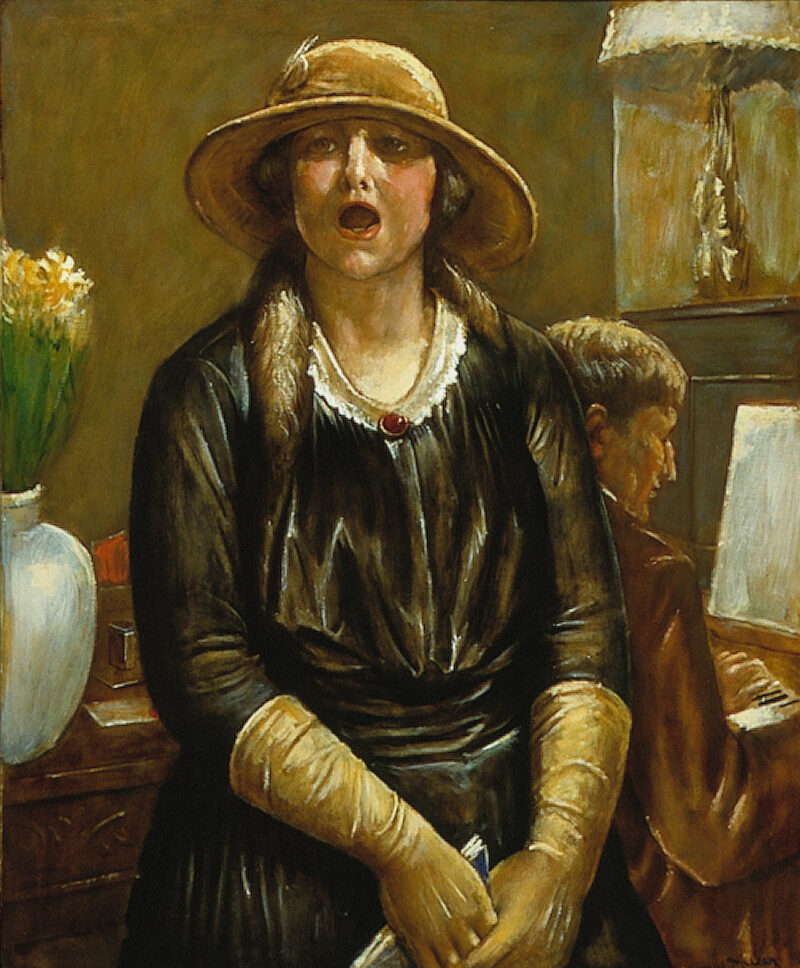
Singer, The
Miller, Kenneth Hayes
1921
Artwork Information
-
Title:
Singer, The
-
Artist:
Miller, Kenneth Hayes
-
Artist Bio:
American, 1876–1952
-
Date:
1921
-
Medium:
Oil on canvas
-
Dimensions:
34 x 28 1/8 inches
-
Credit Line:
Wichita Art Museum, Gift of Virginia M. Zabriskie
-
Object Number:
1983.64
-
Display:
Not Currently on Display
About the Artwork
Kenneth Hayes Miller was one of the most prominent artists and art teachers in America during the first half of the 20th century. He was a student of Robert Henri and like Henri strongly reacted against the stylizations of the genteel tradition that had typified much of late 19th century art, preferring instead unsentimental genre subjects which drew upon events and happenings of everyday life. Miller’s technique reflected an enthusiasm for the High Renaissance tradition in terms of craft if not subject matter. He is often credited for having revived that tradition through his teaching at the Art Students League during the 1920s and 1930s. This is especially true regarding his use of color and color relationships and his rendering of space, texture, and three-dimensional modeling as dominant considerations in painting.
In this work painted in 1925 and titled The Singer, Miller has accurately described the setting of an afternoon song recital presented in the parlor of a private home. In addition, however, he has clearly caught telling aspects of the times, not only in his choice of theme but also through the singer’s fashionable ladies’ apparel: the wide brimmed hat with rounded crown, the fox fur piece around the shoulder, the loose fitting dress with deep folds and white collar, and the long gloves appropriate for an afternoon occasion.
The compositional plan of this work constitutes one of the principal formulas employed by Miller during the late 1920s and in many instances throughout the ’30s as well. Here the thematically dominant figure rendered in rounded sculpturesque masses, is placed not only in the center of the composition but also in the immediate foreground. This arrangement supplies compositional stability and at the same time assures the integrity of the picture plane without destroying the visual interest furnished by slightly blurred backdrop devices which bleed off the edges of the composition. Indeed, the integrity of the picture plane was one of Miller’s most consistently sought-after objectives and one which he emphatically demanded of his students.
Moreover, the foreground figure, forcefully thrust onto the frontal plane, not only strengthens compositional stability but at the same time furnishes a sense of physical presence. In mood, the scene clearly speaks for itself, for as we look at this painting, we readily sense that a quiet prevails throughout the surroundings and that the audience listens attentively while only the voice of the singer is heard.
Miller was born in Kenwood, New York in 1876. Throughout his career he was widely respected as an artist, but perhaps his greatest contributions rest upon his far-reaching influence as a teacher at the Art Students League, especially during the 1930s when his students included such notables as Edward Hopper, Isabel Bishop and others. Miller died in New York in 1952.